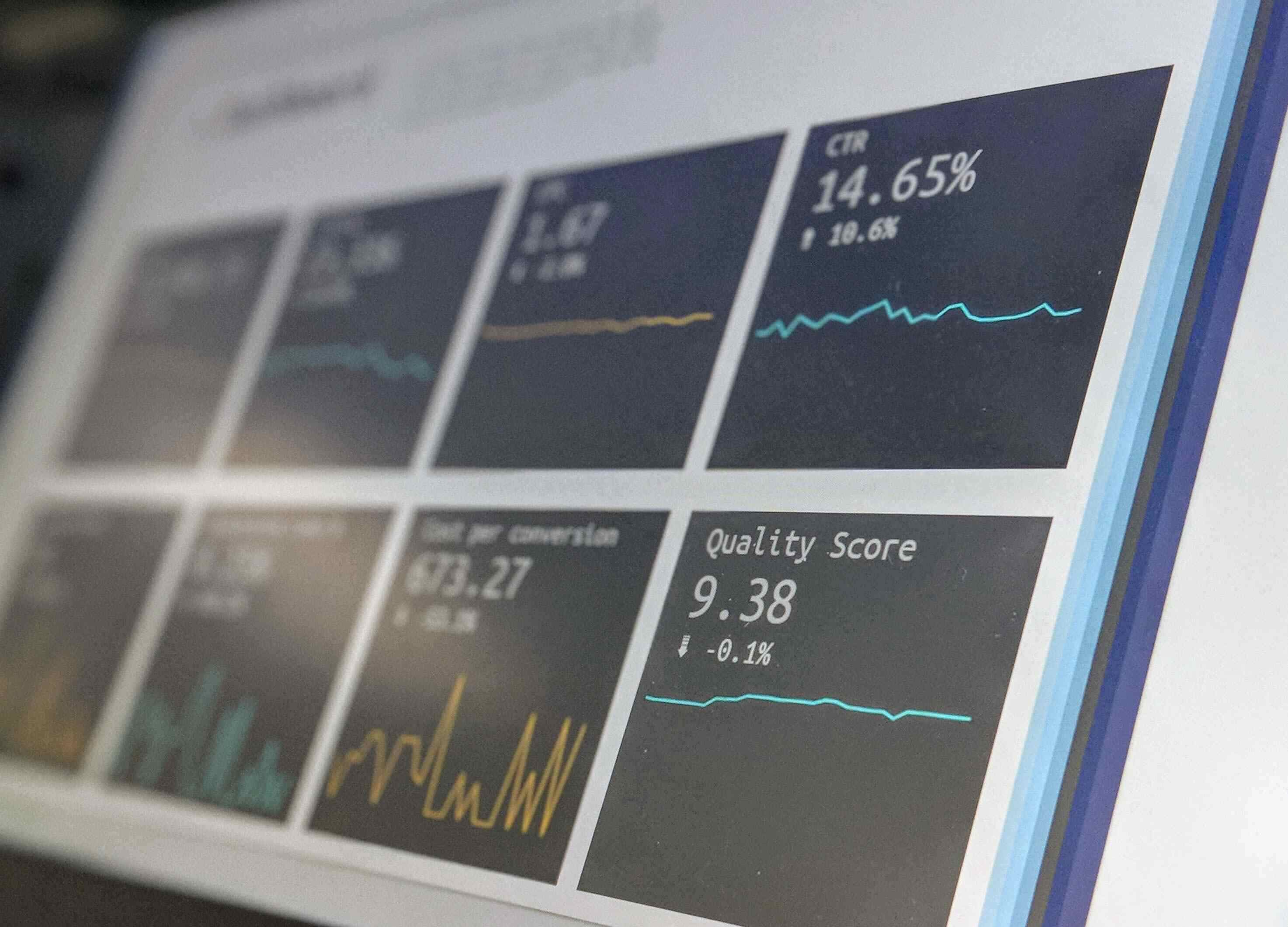In the digital marketing world, online advertisers live and breathe in a competitive world dominated by data. With online marketing being different from traditional marketing, advertisers leverage the power of data in their plan & strategy to achieve their desired advertising goals. Whether you are running search ads, video ads, e-commerce PPC ads, etc., tracking the ad campaign performance is critical. When running PPC ads like Google Ads, Microsoft Ads, LinkedIn Ads, Facebook Ads, YouTube Ads, Instagram Ads, etc., it becomes crucial to track the performance of vital PPC metrics. A data-driven PPC report helps to know how the ad campaign is performing and then take the necessary steps to improve the PPC ad performance. This blog will discuss the essential PPC metrics that need to be tracked & regularly monitored to achieve the desired advertising ROI.
Essential PPC metrics to track
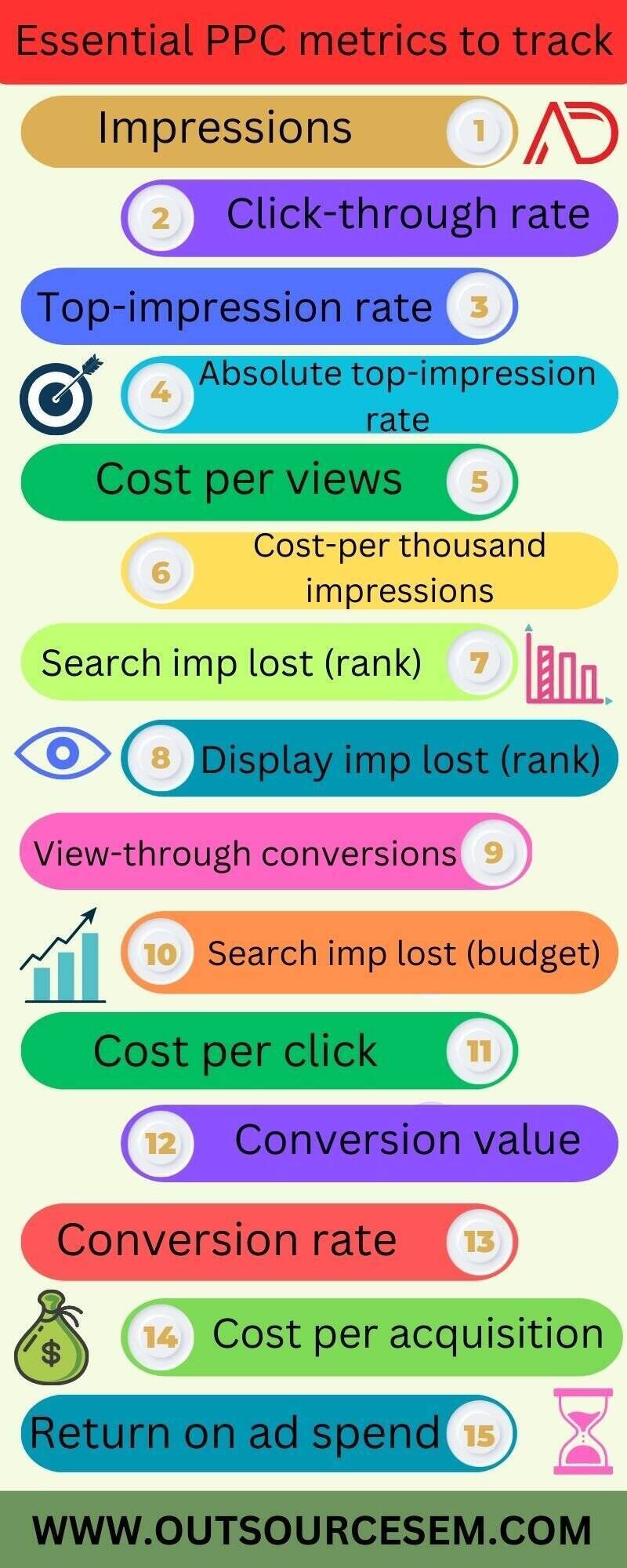
1. Impressions - The essential PPC metric to be considered in the PPC advertising strategy that needs to be focused upon is impressions. When a user views your ad, regardless of whether a click is made on the ad, it is counted as an impression. When the user enters the keyword or search term, your PPC ads appear, and when the user views the PPC ad, it is counted as an impression. The better you work on optimizing the ad campaign, the better the chances of ad visibility.
Suppose your ads appear at the lower portion of the search engine result pages. You need to monitor the point here that there can be the same person that provides multiple impressions. In such cases, till the scroller does not scroll down to see the results, you won’t get an impression. Impressions usually are free unless you choose to pay for impressions versus clicks.
Tips to increase impressions - The essential point to concentrate on in any PPC ad campaign is to focus on optimizing them. Optimizing ad campaigns is essential with a wide range of audiences on search engines and social media platforms. The more the number of impressions on your PPC ad it helps to build brand awareness. Some of the essential points to increase impressions for your PPC ad campaigns are discussed below.
a. Increasing your budget - With more ad budget, you have more opportunity to experiment with your ad campaign. It provides more options to work on keyword bidding in Google Ads auction. The main problem with a smaller ad budget is that irrelevant clicks drain your budget. This prevents you from bidding on more impressions as you would not have enough budget to run PPC ad campaigns. So, having more budget helps to have an increased impression share. You can also outsource PPC services and hire PPC experts that help in increasing impressions even with a lower ad budget and increase advertising ROI.
b. Broadening your targeting - To increase impressions of your ad campaign, you need to broaden your targeting for your ad campaign. You need to focus on broadening your target location, your target audience, location targeting, etc. The wider audiences that your ad campaign has, the chances there are to increase your ads' impressions. As you include negative keywords in your PPC ad campaigns to prevent your ads from appearing to irrelevant users. In the same way, by broadening your audience reach, you can have an increased number of impressions for your ad campaign.
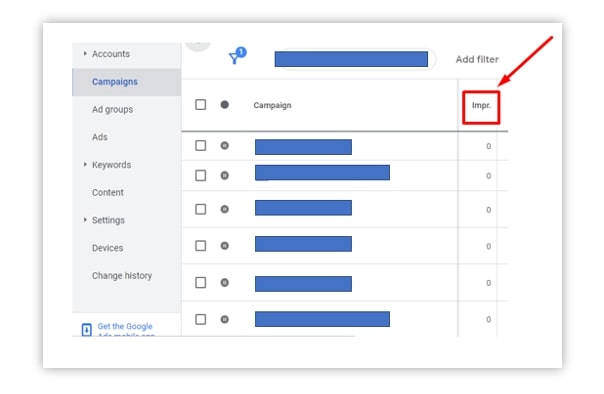
2. Click-through rate - Another essential PPC metric to focus on is the click-through rate. Click-through rate is the percentage of users that click your ad for the total impressions that your ad receives. The CTR is an essential PPC metric that needs to be focused on to improve the performance of PPC ads. A higher CTR is an indication of how relevant your ads are to the target audience. A higher CTR contributes to a better ad rank & position and also improves the quality score.
To have a higher PPC ad rank, you need to focus on having a better CTR. The top ad position does not directly go to the advertiser with the highest bid amount but to the advertiser with the highest ad rank, and CTR is a huge factor in ad rank.
Another way that your ad rank is affected is by the quality score for your PPC ads. The better the ad quality score, the higher the chances of users of your ad rank. So, you must focus on improving your PPC ads CTR. You can focus on writing great content, describing ad copies, etc., so that the users' click on the ad increases, ultimately leading to increasing CTR.
Tips to increase CTR - It is essential to optimize the ad campaign for better CTR, which helps improve the ad performance. Some of the essential points that you need to focus on to increase CTR are listed below.
a. Bid adjustment - To improve CTR for your ad campaign, you need to focus on bid adjustments for your ad campaigns. When you work on better bidding strategies, the chances of your ad rank scale. You can work on bid adjustments to improve the CTR for your ad campaign. You can work on automated bidding and use Google Ai for bid adjustment. You can also work on manual bidding and adjust the bid amount. If you find bid adjustment a tough task to perform, you can outsource PPC services. The PPC professionals focus on performing PPC keyword research, performing PPC campaign analysis, etc., to improve the ad's performance.
b. Improving ad copy - To increase PPC ads CTR, you need to focus on improving the ad copy to grab the users' attention. In your PPC advertising strategy, you need to focus on writing ad copies that grab the users' attention which ultimately leads to increase clicks on the ad.
c. Ad scheduling - Another method to increase the CTR for your PPC ads is to focus on ad scheduling. When your ads appear at the right time to the target audience, the chances of the user to take the intended action increases. You can focus on demographic targeting, audience targeting, etc. This increases the chances of users taking the desired action as they see the products or services when they wish to.
d. Using ad extensions - Ad extensions are a great way to increase the clicks on the ad. The ad extension should engage and entice the users to click on the ad. Whether it is a promotion extension, call-out extension, etc., you need to write an extension that creates a sense of urgency among the users to take the intended action.
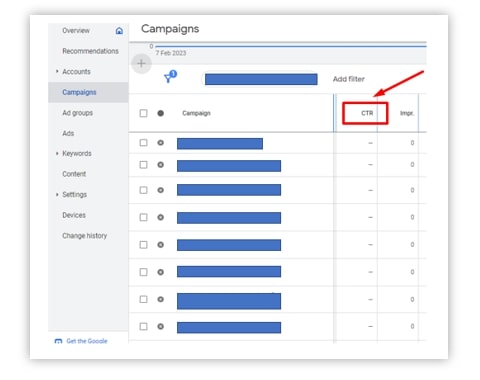
3. Top impression rate - Another vital PPC metric that needs to be focused on is the top impression and absolute top impression rate. These are vital PPC KPIs that are very useful when running search ads campaign. These metrics are built on impression share and are displayed as percentages. You can consider the same practices to improve these metrics performance as that used in impression share.
In the search ads campaign, the essential point to be considered for any PPC advertiser is achieving the top position. When your ad appears at any of the top positions above the organic search results, it is known as the top impression rate.
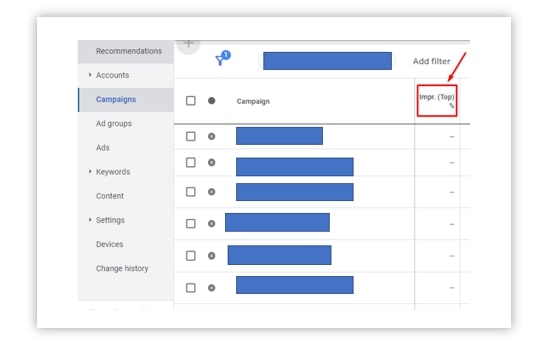
4. Absolute top impression rate - It is a position in which the search ads appear at the absolute top position among the top results that appear above the organic results. With such stiff competition among advertisers ranking on top of the search results becomes quite critical. When your ad appears at the absolute top impression position, the ad is the first thing the user sees for the keyword or search terms entered.
You need to focus on the point that the better your ads are optimized as per the users' interest, the better the chances of them taking the intended action. You can also outsource PPC ads services and avail of PPC management services. It would help you get in touch with PPC professionals with expertise in optimizing ad performance and providing the best advertising ROI.
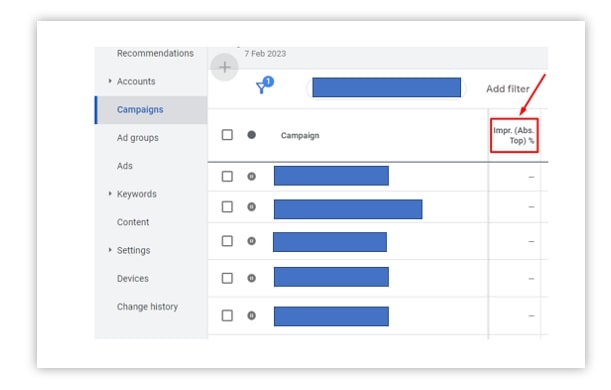
5. CPV (cost per-views) - The cost per views is the next essential PPC metric to focus on in running paid ad campaigns. When you have different ad campaigns for different products or services, there are chances that your ad has views due to the same brand name. When running video ad campaigns, users just view the ad but do not click on it.
In the Google Ads campaign, a view is counted when a user watches a video for 30 seconds. You set a CPV for your video ads informing Google of the amount that you wish to pay for your ad views. As you focus on linking Google Merchant Centre to Google Analytics 4 account to have details of Google shopping ads. Similarly, you need to have complete details of video ads so that you can work on optimizing them to boost lead generation and increase traffic to the webpage.
6. CPM (cost per-thousand impressions) - The next essential PPC metric to be focused on is the cost-per-thousand-impressions (CPM) metric. With a Google Ads campaign, the CPM metric is the cost that you have to pay to Google for every thousand views on Google Display Network (GDN).
It is essential to have a clear idea of the amount you are spending on views on your ads. With such a wide range of audiences that are present on Google Display Network, it becomes vital to target the necessary users that not only interact with the ad but also take the desired action. You need to work on strategies that not only increase traffic on the page but also work on customer retention strategies. You can run remarketing campaigns to get in touch with relevant users with high chances of taking the desired action.
7. Search imp lost (rank) - The next PPC metric that needs to be concentrated upon is the search impression lost due to rank. When running search ads, the focus is to have a high ad rank & position so that your ad has increased clicks. However, there be chances that your ad rank goes down due to reasons such as not working on PPC trends, not optimizing ad text, etc.
To reduce search imp lost (rank), you need to focus on improving the ad rank score. Some of the essential pointers that you can concentrate on to improve ad rank are discussed below.
a. Increase ad relevance by including relevant keywords in your ad copy.
b. Use landing pages that contain the target keywords on the landing page.
c. You can consider increasing the bid amount for your ads in Google Auctions to ensure that your ad rank is high.
d. To improve the ad quality, you can consider adding ad extensions like sitelink extensions, callout extensions, etc.
8. Display imp lost (rank) - The next essential PPC metric to focus upon is the display impression lost due to rank. The display imp lost due to rank are the ads that do not appear in the desired position due to loss in their rankings. It may be because the ad is not optimized correctly or the ad descriptions are not properly added.
To ensure that the display impression lost due to rank is improved, you need to focus on improving the quality score, providing ad descriptions adequately, etc. You can also consider outsourcing PPC management services so that the PPC specialists can prepare a PPC report to analyze the vital reason as to why the display imp is lost due to rank.
9. View-through conversions - Another essential PPC metric to concentrate upon is the view-through conversions. Whether multiple ad campaigns are running or there are multiple ad formats engaged by your business to embrace the desired results, you need to focus on the point that the views of your ads are reduced.
View-through conversions are the number of users that viewed your ad at the first impression but did not click on it and later on converted. It proves the efficacy of your ad campaigns in growing brand awareness and triggering a conversion via another route. Whether you have shopping ads, search ads, video ads, etc., there may be users who did not make click on the ad at first but later on, converted into a customer.
10. Search imp lost (budget) - With so many PPC metrics to be tracked to analyze the performance of the Google PPC ad, there are chances that your search impression is lost due to budget. It may happen because your ad campaign is limited by budget, and the ad does not appear for the entered terms.
With the search impression share lost due to budget, the best thing the advertiser can do is increase the budget. However, there needs to be a limit to which the amount can be added. It cannot be done so that a huge amount is added and money to focus on core business is reduced. So, a proper PPC ad optimization strategy must be followed to ensure that the PPC ad has an increased impression share and no search impressions lost due to budget.
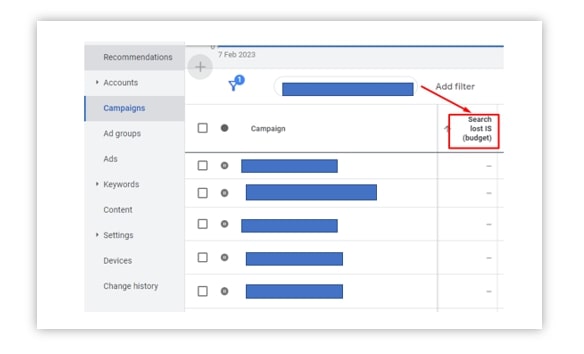
11. Cost per click - Cost per click or CPC is the amount the advertiser has to pay to the search engine or social media platform from which the user reaches the landing page. With multiple ad formats available in Google Ads, Microsoft Ads, Facebook Ads, YouTube Ads, LinkedIn Ads, etc., the cost per click varies for every online platform.
The essential target for advertisers is to focus on lowering the cost per click. The lower the CPC it helps to save money for the business. However, if you have quality leads for your business and your CPC is high, there are chances that the user would be relevant to your business. With different advertising goals for businesses like lead generation, increasing traffic to the landing page, etc., you need to focus on lowering the CPC for your business.
12. Conversion value - The conversion value for your ad campaign helps to measure and optimize the ad campaigns more effectively. It talks more in terms of quality than quantity. With the conversion value PPC metric, you can analyze the users that value in availing of products or services being offered. This metric is only useful if you assign a value to each of your conversions when setting up tracking. Suppose you have a user that converts at $10 and another that converts at $20. So, there may be chance that the conversion value is high, but the number of conversions is less.
So, when working on analyzing the performance of critical PPC metrics, you must consider tracking the conversion value. It helps to know in detail about the ad campaign performance and provides an overall monetary value for your conversions. You can also outsource PPC management services and get in touch with PPC experts that have mastered working with PPC ads.
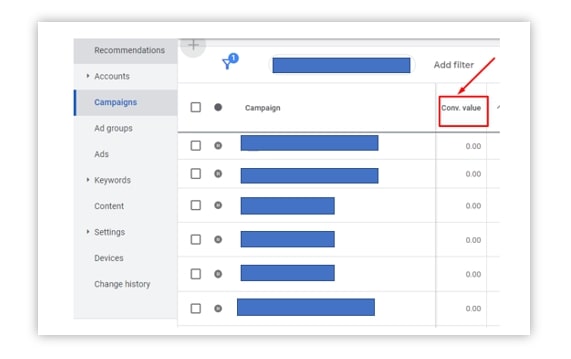
13. Conversion rate - The conversion rate is the PPC metric that essentially needs to be concentrated upon for any PPC ad campaign. It is the number of users that convert into customers to the number of users that reach the landing page. E.g., your ad receives 100 clicks that reach the landing page, and 20 of the users turn into a conversion rate. In this scenario, the conversion rate will be 20%.
Whether it is email marketing, content marketing, PPC ads, etc., the vital point that any business targets is the conversion rate. All marketing efforts are made to ensure that you have achieved the desired conversion rate. This can be achieved by optimizing the essential PPC KPIs so that users' interest in clicking on the ad increases. You need to ensure that the landing page is better optimized so that when the user navigates through various sections on the website, they get the desired goals. As in search engine optimization, you focus on SEO metrics to increase website performance. If the website has a huge number of pages, then you work on SEO pagination so that Google’s robot shows the relevant page to the target audience.
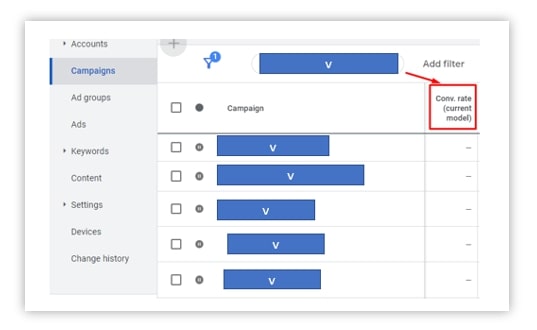
14. Cost per acquisition - Another PPC metric to track the performance of PPC ads is cost per acquisition. The CPA is the amount the advertiser spends to attain a customer. This can be analyzed based on behavioral patterns, demographic targeting, etc. Generally, CPA is higher than cost-per-click, as not all users who click on the ad actually convert into customers. You need to focus on lowering the CPA for your ads so your ad budget is not drained. Having a lower CPA for your business shows that your marketing efforts are yielding the desired results. Sometimes there may be some users on which you have to spend a bit high to convert them into customers. It may be good for your business as the users that are once associated with your business may be your customer in the long run. You can outsource PPC services and get in touch with PPC experts to lower CPA.
15. ROAS - The next essential PPC metric to consider is the return on advertising spend. The ultimate goal of any marketing effort, whether it is email marketing, content marketing, search engine optimization techniques to improve website ranking on SERPs, running PPC ad campaigns, etc., is having the best return on ad spend. ROAS provides a look at the bigger picture and insights into what PPC KPIs lead to better conversions. You can also consider adding negative keywords in your ad groups to trigger the ad from appearing to irrelevant users.
As in the SEO report, you work on optimizing page content, optimizing URL structure, etc., and focus on making the visitors convert into customers. In the same way, with a PPC ad campaign, you can consider optimizing landing pages, updating old content, working on PPC trends, etc., to increase clicks on the ad. You also need to avoid window shoppers on your ad so that your ad budget does not get wasted on irrelevant clicks.
Tips to increase ROAS - Some of the points to be considered to increase the PPC ad ROAS are discussed below.
a. Focus on high-traffic relevant keywords with higher search volume.
b. Include negative keywords in ad group.
c. Improving ad relevance.
d. Lower click-through rate for your PPC ads.
e. Reducing the bounce rate.
Benefits of tracking PPC metrics
1. Improves advertising strategies - One of the vital benefits of tracking the PPC metrics is that it improves advertising strategies. With the PPC metrics, you get to know how the ad campaign is performing and the necessary steps to be taken to optimize them. You can decide on which types of the ad need to be run that yield the desired results.
2. Identify areas of strength and weakness - The best part about PPC ads is that they can be tracked and analyzed. Tracking the performance of PPC metrics, you would get to know the areas of strength and weakness for your business. As there are multiple ad formats like video ads, search ads, display ads, etc., deciding the relevant ad for desired results is vital. Also, you would get to know the issues like whether the ad groups are written well or not, whether images are well optimized, etc.
3. Increases ROI - With PPC metrics, you get to know the performance of the ads. You can then take the necessary steps to optimize them. As in social media marketing, once the user likes the products or services, peer-peer-to marketing increases the chances of the visitor turning into a customer and moving down the marketing funnel. Similarly, once the users associate with your brand in paid advertising, promote your brand name. This ultimately helps increase the business ROI as it generates quality traffic with high chances of taking the desired action.
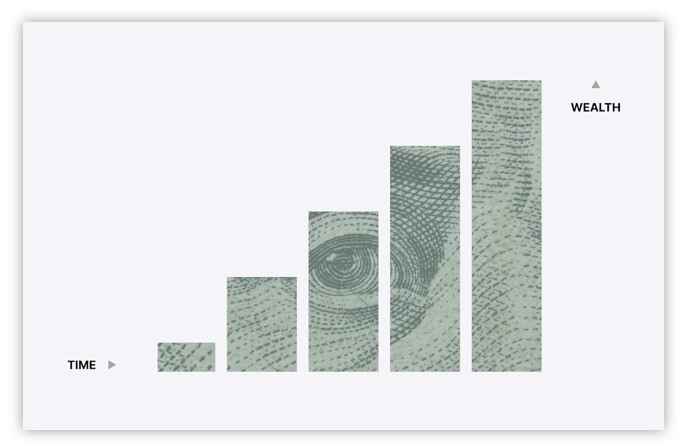
Conclusion
As the PPC ad campaigns revolve around money, every cent must be utilized smartly. With white label PPC services, you can hire PPC experts that help in achieving the desired results. The better the user engagement, the higher the chances of the user taking the intended action. To enhance the performance of the PPC ad campaigns, it is vital to analyze and monitor the performance of the PPC metrics. With multiple ad types available in the pay-per-click advertising world, it becomes essential to know the performance of the crucial metrics. There are myths around PPC advertising that a lot of money is wasted in achieving the desired results. With wasted ad spend, you would not have much benefit. However, the desired results can be obtained with a proper plan & strategy and optimizing the ad campaign properly. You can get in touch with a digital marketing company as the PPC professionals have mastery in local services ads, PPC audit, PPC keyword research, etc. and have the best return on investment. Specifically, effective PPC campaigns can significantly benefit industries in providing best PPC services like painting PPC, plumbing PPC, construction PPC, appliance repair PPC, HVAC PPC and much more to various home industries. By understanding and leveraging PPC strategies tailored to these sectors, businesses can increase their visibility, attract potential customers, and drive growth.
References:
● Every PPC Metric under the Sun (+how to improve each & every one)
● The 6 most important PPC KPIs you should be tracking
